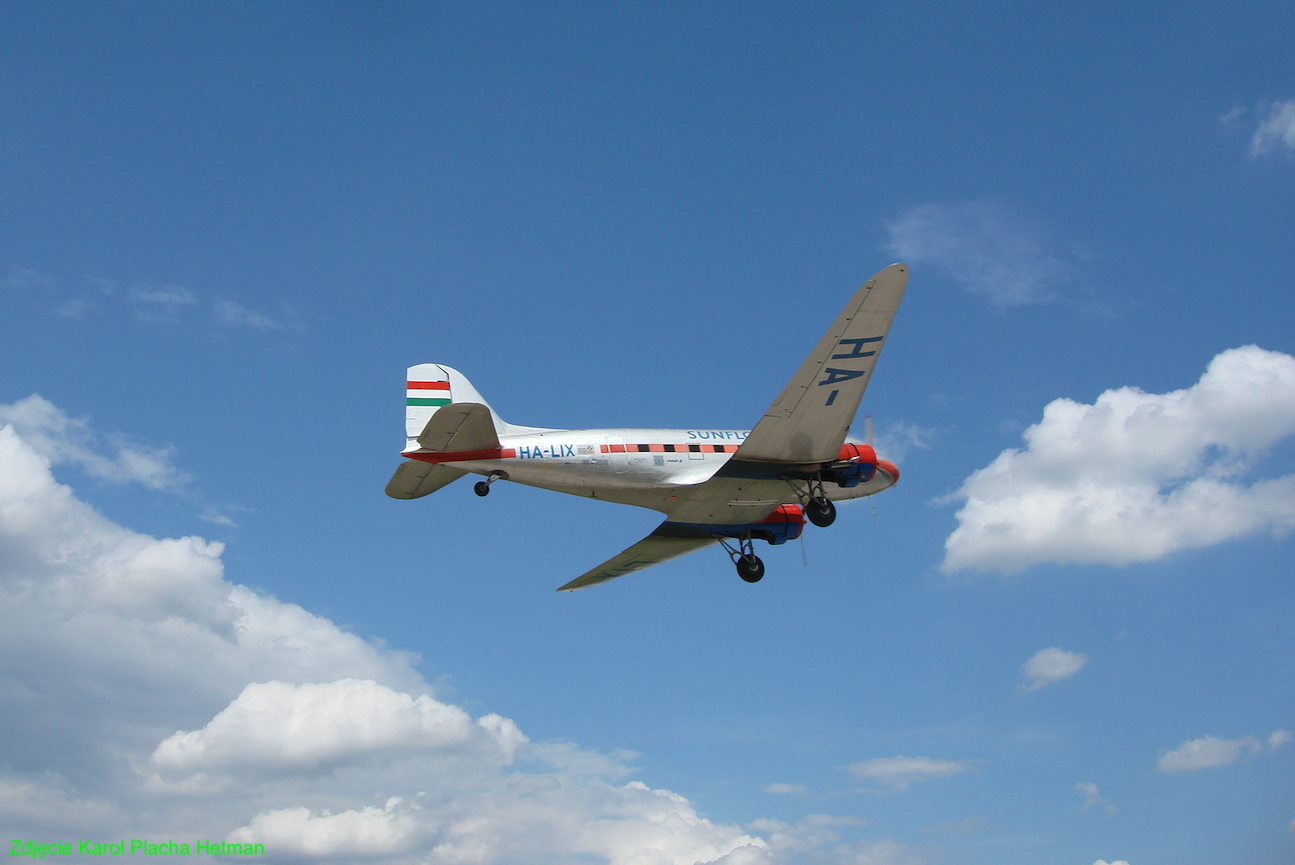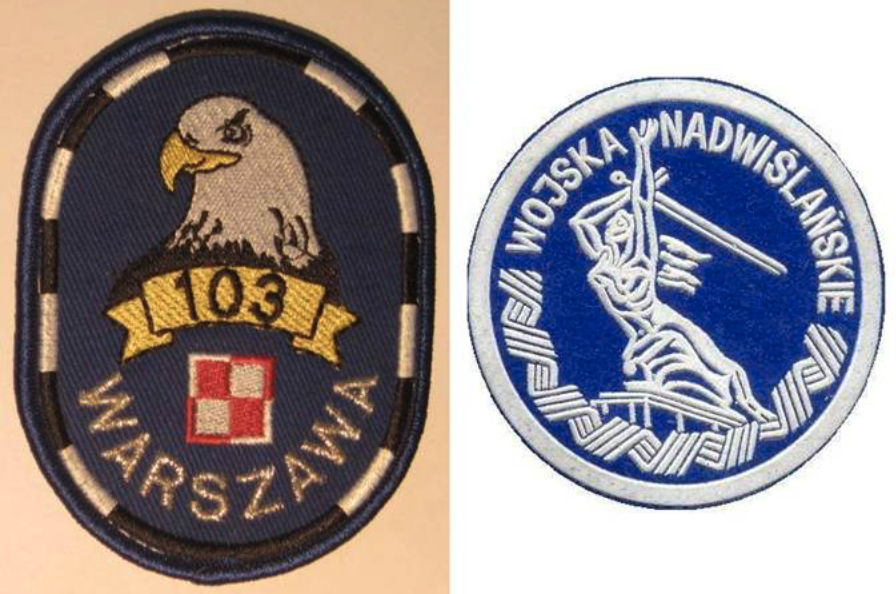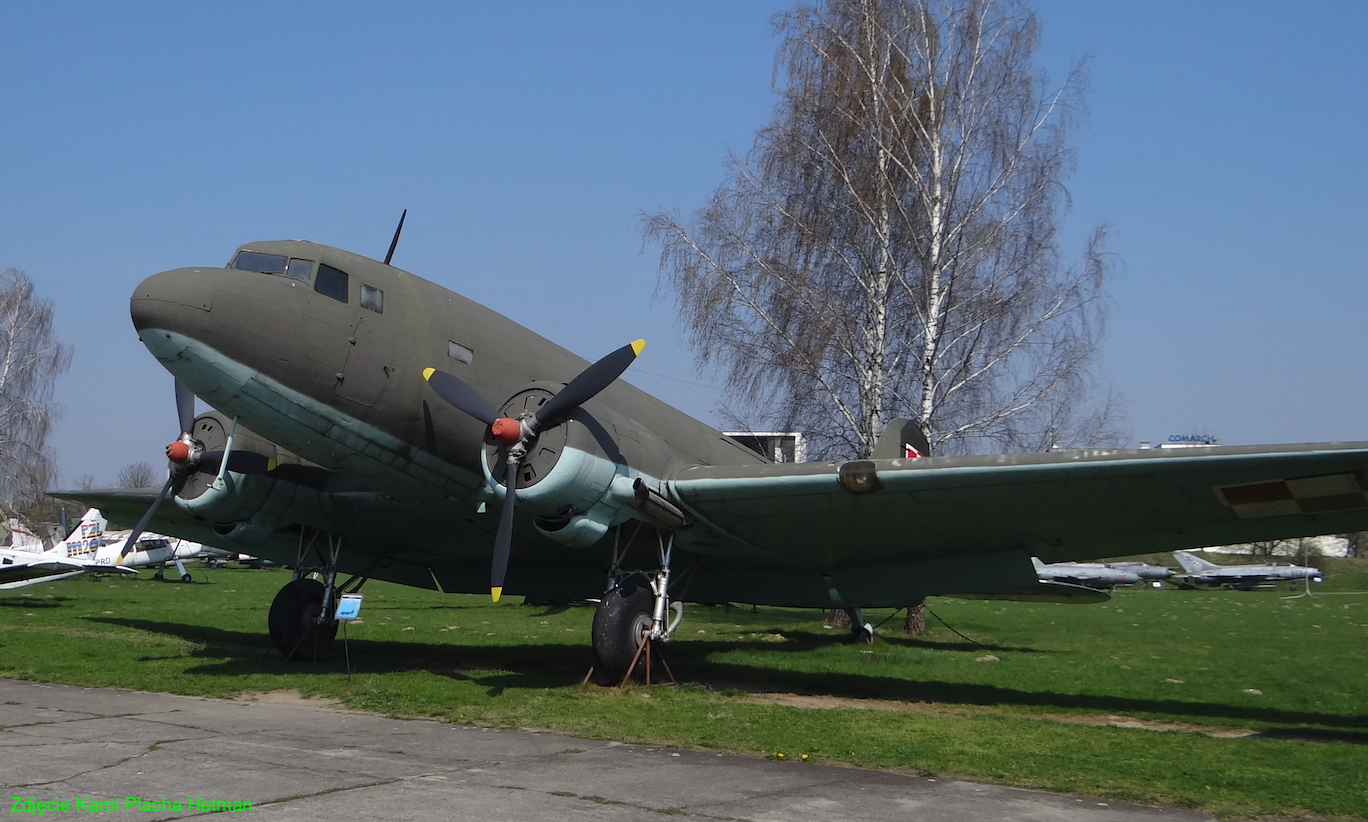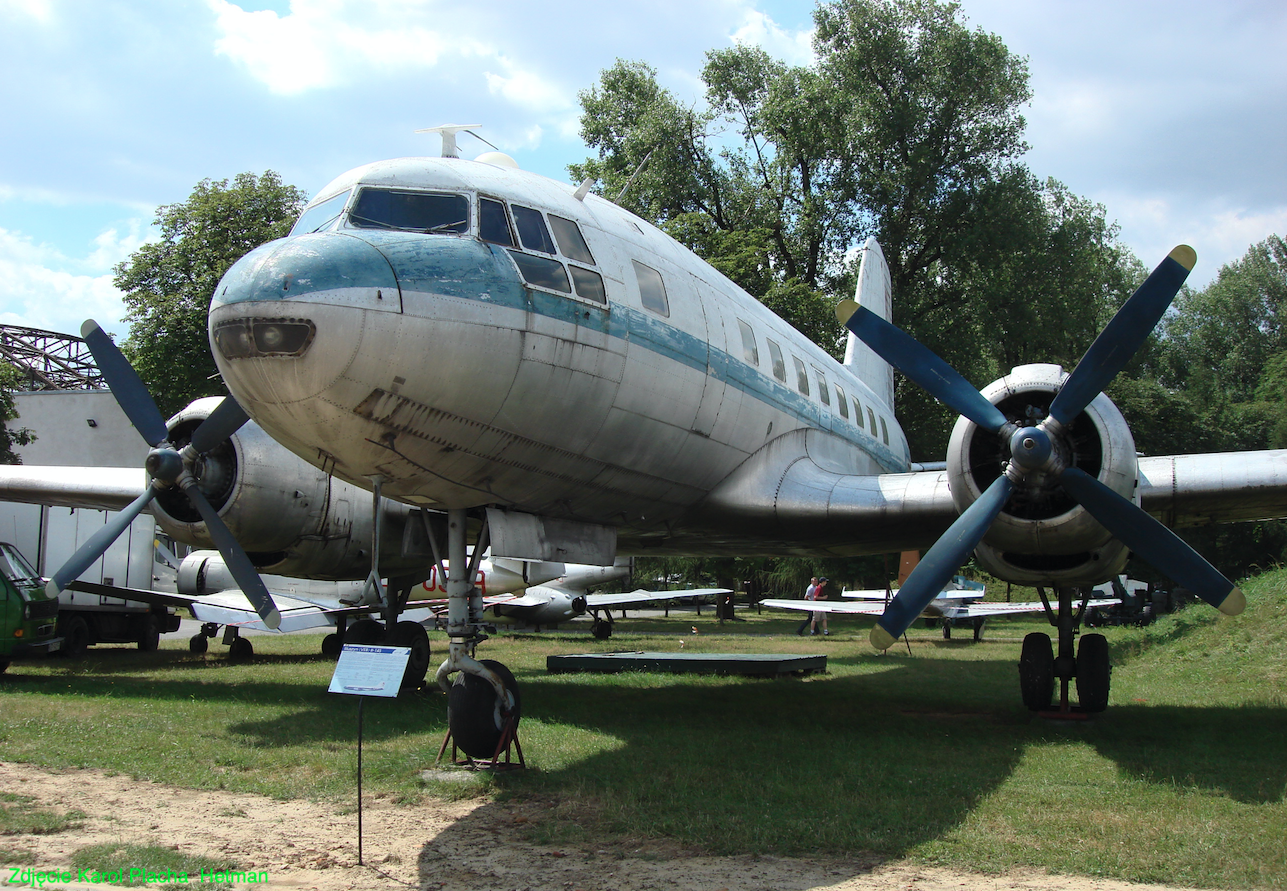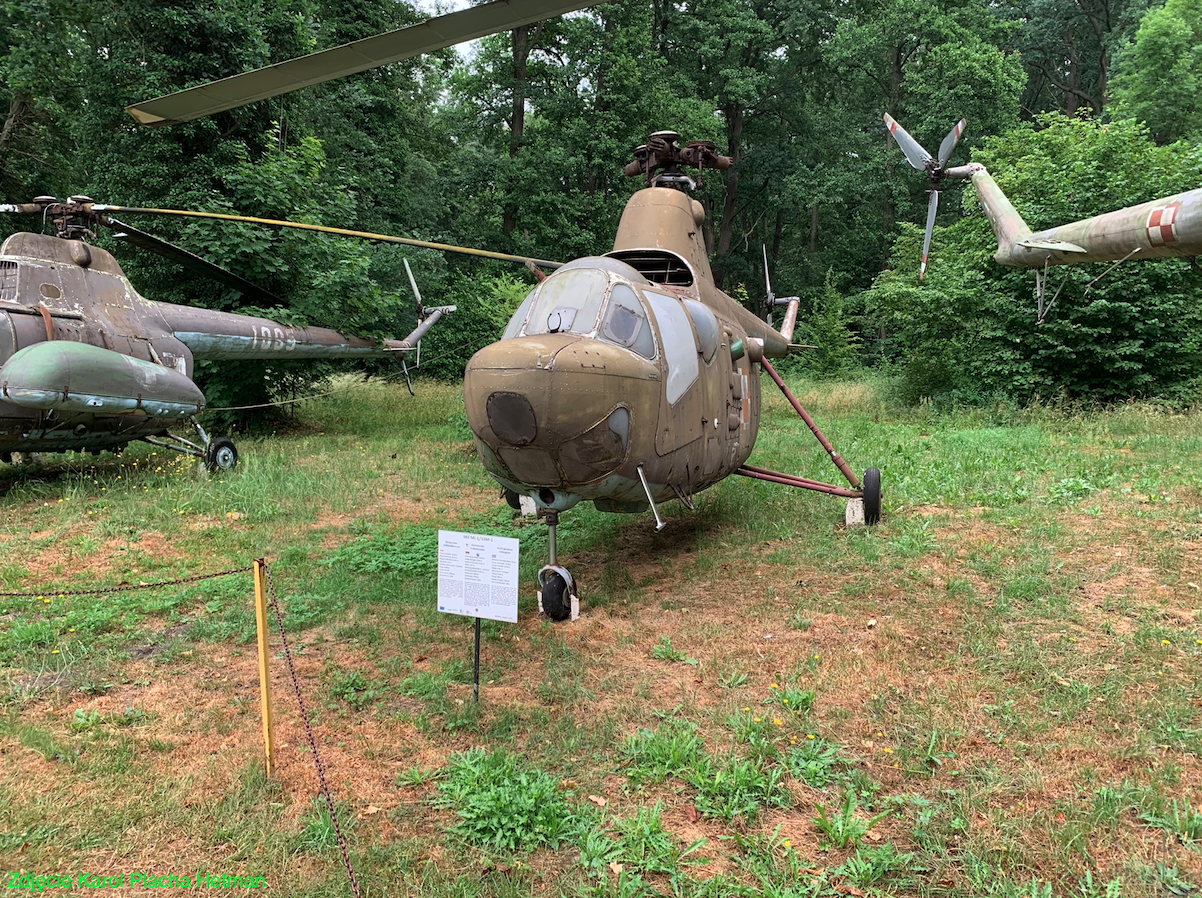Warszawa 2014-03-20
103 Pułk Lotniczy Ministerstwa Spraw Wewnętrznych w Warszawie.
1944 rok – 2001 rok.
Powstanie Wojsk Wewnętrznych.
Nie sposób wyjaśnić istnienia w Polskiej Rzeczypospolitej Ludowej (PRL) specjalnych jednostek, o typowej formacji wojskowej, które nie były w strukturach Wojska Polskiego, bez przedstawienia historii i to od 1944 roku.
Aby zaprowadzić w Polsce porządek społeczny na wzór komunistyczny i zależnym od Moskwy, komuniści musieli się do tego dobrze przygotować. Ogólny zarys powstał już w 1943 roku. Jesienią 1944 roku, po upadku Powstania Warszawskiego i fiasku rozmów Stanisława Mikołajczyka z dyktatorem Stalinem w Moskwie, Kreml zdecydował o zaostrzeniu polityki PKWN na terenach zajętych przez wojska sowieckie. Wówczas praktycznie do linii rzeki Wisły. Wtedy to zapadły decyzje o utworzeniu Wojsk Wewnętrznych, jako specjalnej formacji wojskowej działającej w ramach resortu Bezpieczeństwa Publicznego PKWN.
Bazą do utworzenia nowego rodzaju wojsk był Samodzielny Batalion Szturmowy, sformowany w dniu 18 października 1943 roku, który w dniu 21 marca 1944 roku, został przekształcony w Polski Samodzielny Batalion Specjalny. Była to pierwsza jednostka Wojsk Wewnętrznych. Batalion podlegał bezpośrednio wydziałowi krajowemu Związku Patriotów Polskich (komunistów). W 1944 roku, batalion był podporządkowany Centralnemu Biuru Komunistów Polskich, a następnie przejściowo Polskiemu Sztabowi Partyzanckiemu. W dniu 20 października 1944 roku, w skład batalionu włączono Samodzielny Batalion Ochrony Jeńców Wojennych. Oba bataliony dały początek 1. Brygadzie Wojsk Wewnętrznych. W późniejszym okresie powstały dwie kolejne brygady, noszące numery 2 i 3. Zadaniem brygad była zbrojna likwidacja wszelkich struktur i organizacji Polskiego Państwa Podziemnego, poprzez aresztowanie, znęcanie się i mordowanie.
W czasie, kiedy cała przedwojenna Polska była już uwolniona od wojsk germańskich, w dniu 26 marca 1945 roku, Rząd Tymczasowy podjął uchwałę o powołaniu KBW, czyli Korpusu Bezpieczeństwa Publicznego. Uchwała nakazywała ministrowi bezpieczeństwa publicznego Stanisławowi Radkiewiczowi, w terminie do dnia 1 maja 1945 roku, sformować Korpus Bezpieczeństwa Wewnętrznego. Wyznaczonej daty nie udało się dotrzymać, ze względu na liczne dezercje żołnierzy z nowo formowanych jednostek KBW. Tylko w okresie kwiecień-maj 1945 roku, zdezerterowało około 800 żołnierzy. W dniu 23 kwietnia 1945 roku, zdezerterował cały 2. Samodzielny Batalion Operacyjny Wojsk Wewnętrznych z Lubaczowa, a w dniu 27 kwietnia 1945 roku, 2. Batalion 1. Brygady Wojsk Wewnętrznych z Sokołowa Górnego. W dniu 1 maja 1945 roku, zdezerterował Samodzielny Batalion Operacyjny 3. Brygady Wojsk Wewnętrznych z Biłgoraja.
W obliczu zaistniałej sytuacji Rząd Tymczasowy w dniu 24 maja 1945 roku, polecił sformowanie korpusu ministrowi obrony narodowej. Ze składu Wojska Polskiego wydzielono 4. Dywizję Piechoty, jako podstawę do organizacji KBW. Na czele KBW stanął dotychczasowy dowódca 4 DP gen. Bolesław Kieniewicz. Bazę do formowania KBW, oprócz 4 DP, stanowiły: dowództwo korpusu, dwie brygady zaporowe, dziesięć pułków kawalerii, pięć samodzielnych batalionów ochrony, samodzielny batalion łączności, i inne jednostki będące we wstępnej fazie organizacji. Komuniści mogli sobie na to pozwolić, bo jeszcze przed kapitulacją wojsk niemieckich, Polskim jednostkom, tworzonym na Wschodzie, rozkazano powrót do kraju. Proces powstawania KBW trwał do 22 sierpnia 1945 roku, czyli do czasu przekazania jednostki przez resort obrony narodowej do Ministerstwa Bezpieczeństwa Publicznego (MBP). Z końcem 1945 roku, KBW liczył 29 000 żołnierzy, w 1950 roku – 41 000, a w 1956 roku – 25 000, a w 1961 roku – 25 500 żołnierzy.
Między wrześniem, a październikiem 1945 roku, dokonano kolejnej reorganizacji. Powołano między innymi w każdym wojewódzkie Wojska Bezpieczeństwa Wewnętrznego, które były organami dowodzenia wojskami KBW w skali terytorialnej. Powołano również jednostki operacyjne podzielone na bataliony, znajdujące się w każdym wojewódzkie. W tym czasie, utworzono także specjalne ośrodki i jednostki; Szkołę Oficerską KBW, Pułki Zmotoryzowane, Eskadrę Łączności i Lotnictwa, Prokuraturę i Sądy KBW. Pozwoliło to na zintensyfikowanie działalności Korpusu i podległych mu jednostek na terenie całego kraju. Taka struktura organizacyjna jednostek KBW zapewniała daleką samodzielność w kierowaniu jednostkami, umożliwiając tym samym skuteczniejszą walkę z Polskim Podziemiem oraz realizowanie zadań ochronno-konwojowych.
1946 rok.
Od początku 1946 roku, odziały KBW działały już systematycznie i na szeroką skalę. Urządzano obławy, prowokacje, zatrzymania, przeszukania. Wszystko to realizowano pod kierownictwem aparatu Urzędy Bezpieczeństwa Publicznego. Oddziały KBW ochraniały lokującej się na terenie wyzwolonej Polski organy władzy ludowej. Wojska KBW zabezpieczały także ochronę ważniejszych obiektów przemysłowych i szlaków komunikacyjnych.
Od marca 1946 roku, terenowe jednostki KBW wraz z UB (urząd bezpieczeństwa), MO (milicja obywatelska), ORMO (ochotnicza rezerwa milicji obywatelskiej), podporządkowane były wojewódzkim komisjom bezpieczeństwa, podległym Państwowej Komisji Bezpieczeństwa.
KBW powołano do walki z podziemiem antykomunistycznym w skład, którego wchodziła Armia Krajowa, Narodowe Siły Zbrojne, WiN i inne Polskie organizacje podziemia zbrojnego. KBW walczyły także z ukraińskimi oddziałami UPA i OUN oraz germańskim werwolf. Oddziały KBW prowadziły pacyfikacje wsi, które wspierały podziemne oddziały antykomunistyczne. Wspomagały fałszowanie referendum z 1946 roku. Ochraniały wybory do Sejmu Ustawodawczego w 1947 roku. Prowadziły akcje propagandowo-dezinformacyjną w celu skompromitowania Polskiego Stronnictwa Ludowego. Oddziały KBW w okresie marzec 1945 roku – kwiecień 1947 roku, zabiły około 2 000 żołnierzy AK, NSZ i innych oddziałów antykomunistycznych. Raniły 301 osób, wzięły do niewoli 12 200 osób, aresztowały około 300 osób sprzyjających podziemiu. Oskarżono i postawiono przed sądem dalszych 13 000 osób. Straty KBW to około 500 żołnierzy.
1947 rok.
W 1947 roku, oddziały KBW szczyciły się akcją militarno-przesiedleńczą w Bieszczadach; akcja „Wisła”. Oddziały KBW prowadziły obozy przymusowej pracy, odosobnienia i internowanych. Cały czas współpracowały z sowieckimi oddziałami NKWD.
Zasadniczym obszarem walk wojsk KBW były tereny wiejskie, głównie w południowo-wschodnich rejonach kraju, a szczególnie w województwach białostockim, warszawskim, lubelskim i krakowskim. Do zimy 1947 roku, KBW, jako podstawowa militarna siła pierwszego rzutu, wsparta jednostkami organów bezpieczeństwa, doprowadziła do rozbicia takich dużych zgrupowań typu partyzanckiego jak „Burego” – Kwiecień 1946 rok, „Orlika” – Czerwiec 1946 rok, „Bartka” – jesień 1946 rok. Od wiosny 1947 roku, wojska KBW nasiliły swą działalność wobec oddziałów UPA, zarówno w ramach operacji „Wisła” Kwiecień-Lipiec 1947 roku, jak i podczas ostatecznego oczyszczania południowo-wschodnich obszarów kraju z niedobitków UPA. W tym właśnie czasie, działania KBW były ściśle koordynowane przez Wojewódzkie Komitety Bezpieczeństwa Urzędu Bezpieczeństwa Publicznego, Milicji, jednostek MON. Na szczeblu centralnym najważniejszymi akcjami przeciwko podziemiu poakowskiemu kierowała Państwowa Komisja Bezpieczeństwa, której przewodniczył Naczelny Dowódca Wojska Polskiego marszałek Michał Rola-Żymierski.
1948 rok.
Już z końcem 1947 roku, oddziały KBW wyspecjalizowało się w zwalczaniu pozostałości podziemia zbrojnego, organizowaniu i pełnieniu służby ochronno-konwojowej. Pierwszoplanowym celem była całkowita likwidacja zbrojnego podziemia. Trwało to jednak aż do 1948 roku, choć w późniejszym okresie wciąż działały małe lokalne grupy antykomunistyczne. W późniejszym okresie każdego podziemia i sprzeciwu wobec władzy ludowej.
Działania KBW ewoluowały. Stosowano nowe metody; głęboka inwigilacja, rozpoznanie, zasadzki, prowokacje i pościgi. Wiele tych akcji zakończyło się fiaskiem KBW. Dlatego KBW łączyło swoje wysiłki z Milicją Obywatelską, Urzędem Bezpieczeństwa Publicznego i jednostkami Wojska Polskiego, a przede wszystkim NKWD. Szczególnie źle układała się współpraca z jednostkami Wojska Polskiego, z uwagi na sympatyzowanie żołnierzy służby zasadniczej z podziemiem.
1949 rok.
Do 1949 roku, aparatowi ucisku komunistycznego udało się zlikwidować główne struktury Podziemia Niepodległościowego. Jednak walka przeciw nowym formom działania antykomunistycznego stawała się coraz bardziej trudna. Karabin już nie wystarczał. Podziemie pozbawione struktur wbrew pozorom pozostawało bardzo silne, a to z uwagi na skupienie się wokół Kościoła Katolickiego. Dlatego władza rozważała redukcję ilościową oddziałów KBW. Tak się nie stało, gdyż komuniści z górnych szczebli KBW nic innego nie potrafili i w cywilu nie nadawali się do normalnej pracy. Dlatego dla ratowania twarzy KBW ich oddziały zaczęły brać udział w usuwaniu klęsk żywiołowych, walkach z dużymi pożarami, budową dróg (na przykład Bieszczady), budowie szkół i innych.
Do 1954 roku, KBW podlegał ministrowi bezpieczeństwa publicznego, a następnie ministrowi spraw wewnętrznych. W 1955 roku, oddziały KBW wzięły udział w akcji antybalonowej, kiedy to nad Polską zrzucano ulotki, z inicjatywy Radia Wolna Europa. W 1956 roku, oddziały KBW pacyfikowały Powstanie Poznańskie.
1961 rok.
Stan KBW na dzień 29 wrzesień 1961 roku: Dowództwo i sztab. Zarząd Polityczny. Szefostwa: Służby Samochodowej, Artylerii i Broni Pancernej, Służby Chemicznej, Wojsk inżynieryjnych. Pododdziały zabezpieczenia: batalion łączności (Warszawa), kompania łączności radioliniowej, kompania samochodowa, kompania ochrony, magazyn rezerw. Eskadra Lotnictwa Łącznikowo-Transportowego (Lotnisko Bemowo). Brygada Nadwiślańska Ochrony Rządu (Warszawa). 1 Mazowiecka Brygada KBW (Góra Kalwaria). 2 Podlaska Brygada KBW (Białystok). 5 Brygada KBW Ziemi Krakowskiej (Kraków, Wadowice. Przywłaszczyli sobie chlubne dzieje Podhalańczyków. Szczyciła się zlikwidowaniem oddziału majora Józefa Kurasia „Ogień”). 3 Pułk KBW (Lublin). 6 Pułk KBW (Katowice). 7 Pułk KBW. 10 Wielkopolski Pułk KBW (Poznań). 11 Dolnośląski Pułk KBW (Wrocław Jelenia Góra). 12 Pułk KBW Ziemi Szczecińskiej (Szczecin). 13 Kaszubski Pułk KBW (Gdańsk). 15 Pułk KBW Ziemi Opolskiej (Prudnik Opole). 9 Pomorski Pułk Pontonowo-Mostowy (Bydgoszcz). 10 batalion pontonowo-mostowy (Rawicz). 12 batalion pontonowo-mostowy (Szczecin). 16 batalion pontonowo-mostowy (Koszalin). 1 batalion inżynieryjny (Warszawa). 2 batalion inżynieryjny (Grajewo). 4 batalion inżynieryjny (Rzeszów). 6 batalion inżynieryjny (Lubliniec). 11 batalion inżynieryjny (Jelenia Góra). Szkolny pułk samochodowy (Łódź). Pułk skadrowany. Lekki pułk pancerny. Służba Przeciwpożarowa (Poznań). Służba Przeciwpożarowa (Szczecin). Służba Przeciwpożarowa (Kraków). Służba Przeciwpożarowa (Bydgoszcz).
Szkoły KBW; Szkoła Oficerska KBW (Gdańsk lata 1954-55, Czerwieńsk k. Zielonej Góry lata 1955-56), Ośrodek Szkolenia (Legnica, prowadzony przez moskali), Szkoła Podoficerów Łączności (Prudnik), Ośrodek Szkolenia Wojsk Inżynieryjnych KBW (Pułtusk).
Żołnierze KBW mundur wyjściowy mieli w kolorze zielonym (khaki). Czapki zielone, okrągłe z granatowym otokiem. Strój ten obowiązywał także w wojskach MSW.
1965 rok.
Kierownictwo PZPR zdecydowało, że w Polsce nastąpiła już stabilizacja ustroju socjalistycznego. Zbrojne podziemie zostało całkowicie zlikwidowane. Dodatkowo sytuacja gospodarcza nie ulegała poprawie. Szukając oszczędności postanowiono zlikwidować KBW. Choć w rzeczywistości nastąpiło tylko przeformowanie.
Zgodnie z zarządzeniem premiera z dnia 24 czerwca 1965 roku, KBW przeformowano w Wojska Obrony Wewnętrznej i zaczęły pełnić służbę w ramach systemu Obrony Terytorialnej Kraju. W rzeczywistości zostały przekazane pod ministerstwo obrony narodowej. Część byłych jednostek KBW włączono w skład nowo powstałych Nadwiślańskich Jednostek Wojskowych MSW (ministerstwa spraw wewnętrznych).
Kolejne zmiany nazwy: Nadwiślańskie Jednostki Wojskowe Ministerstwa Spraw Wewnętrznych im. Czwartaków AL, funkcjonowały w okresie 1965-1974 roku. Nadwiślańska Brygada MSW im. Czwartaków AL, funkcjonowały w okresie 1974-1990 roku. Nadwiślańskie Jednostki Wojskowe Ministerstwa Spraw Wewnętrznych i Administracji, funkcjonowały w okresie 1990-2001 roku.
1966 rok.
Od 1966 roku, funkcjonowały Nadwiślańskie Jednostki Wojskowe Ministerstwa Spraw Wewnętrznych. (w okresie 1997-2002 roku, jako Nadwiślańskie Jednostki Wojskowe Ministerstwa Spraw Wewnętrznych i Administracji). Kontynuowały one działalność KBW. W 2002 roku, zostały rozformowane.
Jednostki Nadwiślańskie były rozlokowane w kilku częściach kraju (Bieszczady, Śląsk, Warmia). W Warszawie przy ul. Podchorążych 38 (m.in. Dowództwo Nadwiślańskich Jednostek Wojskowych, Jednostka Wojskowa nr 2610).
1981 rok.
W okresie stanu wojennego w Polsce jednostki MSW razem z ZOMO (zmilitaryzowane oddziały milicji obywatelskiej) były zbrojnym ramieniem generała Wojciecha Jaruzelskiego. Zostały wykorzystane do przejęcia obiektów RTV, w ramach operacji Azalia.
1992 rok.
W 1992 roku, w skład Wojsk MSW wchodziły: pododdziały ochrony, antyterrorystyczne, łączności, 103. Pułk Lotnictwa Transportowego oraz jednostki zabezpieczenia, ochrony i dowodzenia. Skład Nadwiślańskich Jednostek Wojskowych Ministerstwa Spraw Wewnętrznych: Dowództwo Nadwiślańskich Jednostek Wojskowych – Warszawa. 1 Warszawska Brygada Zmotoryzowana (JW 2610) – Warszawa. 6 Brygada Zmotoryzowana – Katowice. 20 Brygada Łączności Ziemi Kieleckiej (JW 3417) – Kielce – podporządkowana od 1.01.1992 roku. 1 Mazowiecki Pułk Ochrony (JW 4829) – Góra Kalwaria – podporządkowany od 1.01.1992 roku. 4 Bieszczadzki Pułk Zmotoryzowany (4 Pułk Ochrony); (JW 2667) – Sanok. 14 Mazurski Pułk Ochrony (JW 2839) – Olsztyn – podporządkowany od 1.01.1992 roku. 2 Pułk Zabezpieczenia (od 01.01.1993) (JW 3466) – Czerwony Bór – poprzednio batalion zabezpieczenia – podporządkowany NJW od 1.01.1992 rok. 3 Pułk Zabezpieczenia Inżynieryjnego (JW 2621) – Legionowo, Piaseczno i Warszawa-Szczęśliwice, potem od 1994 roku, Warszawa-Bemowo. 7 Pułk Łączności (JW 1060) – Emów k. Warszawy. 7 Pułk Dowodzenia (JW 2909) – Emów k. Warszawy – sformowany na bazie 7 pł, obecnie Centralny Ośrodek Szkolenia Agencji Bezpieczeństwa Wewnętrznego. 103 Pułk Lotnictwa Łącznikowego (JW 1159) – Warszawa-Bemowo ul. Kocjana 3. Oddział Zabezpieczenia Obiektów Specjalnych (Oddział Zabezpieczenia Stanowisk Kierowania WOW)- Warszawa – podporządkowany od 1.01.1992 roku. Ośrodek Szkolenia Poligonowego (JW 2501) – Raducz Centralny Ośrodek Szkolenia NJW (JW 1492)- Katowice potem Raducz. Samodzielny Oddział Żandarmerii Wojskowej Nadwiślańskich Jednostek MSW – Emów, następnie Warszawa (JW 2780). 112 Batalion Zabezpieczenia (JW 1076) – Linin – podporządkowany od 1.01.1992 roku. Składnica Techniczno-Materiałowa (JW 2804) – Linin. Samodzielna Stacja Naprawcza – Warszawa-Bemowo. Centrum Radiowe (JW 2861) – Warszawa. Centralna Składnica Amunicji (JW 1774) – Stara Wieś. 9 Samodzielny Batalion Zaopatrzenia i Obsługi Dowództwa NJW MSW (JW 2102) – Warszawa. 7 Samodzielny Batalion Inżynieryjny (JW 1917) – Warszawa, ul. Kocjana 3.
1995 rok.
Od 1995 roku, jednostki Ministerstwa Spraw Wewnętrznych przejęły zadania ochrony obiektów rządowych i placówek dyplomatycznych. W jej skład wchodziły pododdziały ochrony, antyterrorystyczne, łączności, jak również pułk lotnictwa transportowego.
2002 rok.
Wojska Ministerstwa Spraw Wewnętrznych zostały rozwiązane. Część ich zadań przejęło Biuro Ochrony Rządu (BOR).
Eskadry Lotnictwa Transportowo-Łącznikowego MSW. 103. Pułk Lotniczy MSW.
103 Pułk Lotniczy (JW 1159) – Warszawa-Bemowo (ul. Kocjana 3) i Bielany (Wrzeciono, ul. Marymoncka).
Lotnisko Bemowo, jak żadne inne w kraju, było silnie związane z szeroko rozumianym wewnętrznym porządkiem publicznym. Lotnicze jednostki podległe administracji publicznej tutaj stacjonowały. Od samego początku bazowała tu jednostka lotnicza, która podległa pod Korpus Bezpieczeństwa Wewnętrznego. Jednostka ta dysponowała samolotami transportowymi Li-2, Po-2.
Z całą pewnością, samoloty Lisunow Li-2 były wykorzystywane przez Eskadrę KBW. Z dużym prawdopodobieństwem KBW wykorzystywał także samoloty DC-3. W 1946 roku, dla PLL LOT z demobilu kupiono 9 samolotów DC-3. Samoloty te służyły do przewozu państwowych przesyłek, ważnych osób z aparatu komunistycznego, jak również specjalnych więźniów, jak np.; Kardynał Stefan Wyszyński.
Samolot Polikarpow Po-2, to ten samolot który pomógł komunistom utrwalić władzę w PRL. W 1950 roku, pułk przyjął na stan pierwsze samoloty Iliuszyn Ił-12. Samolot transportowy Ił-12 był następcą samolotu Li-2. W 1949 roku, Polska kupiła pierwsze 5 samoloty Ił-12. W 1950 roku, kupiono dla wojska dwa samoloty; jeden Ił-12 B nb 002 z przeznaczeniem do przewozu ważnych osobistości, ewentualnie ładunku i jeden Ił-12 D nb 001 transportowo-desantowy. Ta maszyna została przeznaczona do służby w KBW.
Samolot Ił-14 był następcą maszyny Ił-12. Samoloty Ił-14 były wykorzystywane przez PLL LOT, 36. SPLT oraz 103. Pułk Lotnictwa MSW. Pierwsze maszyny trafiły do Polski w 1955 roku. Samoloty były produkowane w; CCCP, NRD i Czechosłowacji.
Lotnisko Bemowo było bardzo ważne, dla realizacji zadań stałych i doraźnych wykonywanych przez KBW, które wymagały użycia samolotów i śmigłowców. Obecnie, trudno jest ustalić, które samoloty i śmigłowce na stałe bazowały na Lotnisku Bemowo, w ramach Eskadry Lotnictwa Transportowo-Łącznikowego MSW, a później 103. Pułku Lotniczego. Jednym z problemów była wymiana sprzętu z 36. SPLT z Okęcia, a także z innych jednostek lotniczych rozrzuconych po kraju.
Na pewno, na Lotnisku Bemowo bazowały pierwsze sprowadzone do Polski śmigłowce Mi-1, a następnie Mi-4. Znany jest fakt wykorzystania śmigłowców w zadaniu milicyjnym z 1965 roku, kiedy to po raz pierwszy zostały poderwane w powietrze dwa śmigłowce Mi-4 i dwa śmigłowce SM-1 Eskadry Lotnictwa Transportowo-Łącznikowego MSW, w celu poszukiwania zbiegłych z więzienia w Krośnie przestępców. Niezależnie od prowadzonych poszukiwań, wzdłuż prawdopodobnej trasy ucieczki skazanych, rozrzucano ulotki z komunikatem milicyjnym. Fakt ten podawany jest jako pierwsze operacyjne użycie śmigłowców podległych MSW.
Do produkcji śmigłowca Mi-1 w Polsce w WSK Świdnik przygotowywano się od 1954 roku. Śmigłowiec otrzymał oznaczenie SM-1. Pierwsze maszyny oblatano w 1956 roku. Również w tym roku, śmigłowce Mi-1/SM-1 trafiły na wyposażenie wojska. W KBW używano głównie wersji łącznikowo-pasażerskiej. W 60-latach relacje radiowe, transmitujące kolarski wyścig „Pokoju”, przeprowadzano właśnie z pokładu śmigłowca SM-1.
W 1958 roku, na stan Polskiego Lotnictwa Wojskowego przyjęto śmigłowce Mi-4. Pierwszy publiczny pokaz tych maszyn odbył się w Warszawie nad Stadionem 10-Lecia, z okazji Dni Lotnictwa i Centralnych Dożynek.
W 1961 roku, Eskadra Lotnictwa KBW przyjęła na stan śmigłowiec SM-2, który jest wersją rozwojową SM-1. W powiększonej kabinie znalazło się miejsce dla 5 osób. Zasięg z dodatkowym zbiornikiem paliwa wyniósł 500 km.
1965 rok.
Około 1965 roku, Eskadra Lotnictwa Transportowo-Łącznikowego MSW została przekształcona w 103. Pułk Lotnictwa Nadwiślańskich Jednostek Wojskowych MSW.
Nastąpił wówczas nowy podział sprzętu pomiędzy 36. SPLT i 103. Pułkiem MSW. 36. SPLT miał na stanie wyłącznie samoloty, natomiast 103 Pułk MSW przejął na stan wyłącznie śmigłowce. Uzupełniono ich ilość poprzez doposażono między innymi w śmigłowce Mi-2. PZL Mi-2 jest śmigłowcem konstrukcji sowieckiej, jednak na terenie państwa CCCP jego produkcji seryjnej nie prowadzono. W styczniu 1964 roku, podpisano porozumienie pomiędzy Polską, a CCCP i w 1965 roku, pierwsze Mi-2 zjechały z taśmy produkcyjnej PZL Świdnik. W 1966 roku, Mi-2 trafiły na wyposażenie 103. Pułku.
Przybywało zadań wykonywanych na rzecz resortu spraw wewnętrznych. Nie rozróżniano wówczas zadań na milicyjne i wewnętrzne. Wielu pamięta, jak w 70-latach XX wieku był słynny wyścig kolarski „Wyścig Pokoju”, który był relacjonowany na żywo z pokładu śmigłowca Mi-2. Jednak nieliczni wiedzą, że powstanie takiej odmiany wojskowej śmigłowca narodziło się z myślą o rozpoznaniu powietrznym przeciwnika. Początkowo przy pomocy kamery filmowej, a następnie z transmisją on-line, do punktu dowodzenia. Komunistyczna władza szybko dostrzegła, możliwość wykorzystania tej techniki dla pacyfikowania strajków, buntów, nielegalnych pochodów i tym podobnych „wrogich” akcji. Relacje z „Wyścigu Pokoju” były tylko epizodem, ku radości kibiców.
W 1968 roku, Wojsko Polskie przyjęło na stan śmigłowce typu Mi-8. Początkowo wykorzystywano je jako środek transportu, lecz wkrótce (z uwagi na duży udźwig) wykonywały zadania jako latające dźwigi. Od 1977 roku, 103. Pułk Lotniczy MSW przyjął na stan śmigłowce Mi-8. Było ich 21 egzemplarzy, większość w wersji Mi-8 T. Były także odmiany Mi-8 salonka (dyspozycyjne). W dniach 2-10 czerwca 1979 roku, z pierwszą pielgrzymką do Polski przybył Papież święty Jan Paweł II. W związku z tym kilka (4-6) śmigłowców Mi-8 przemalowano na biało i umieszczono na nich symbole PLL LOT, choć maszyny nadal miały wojskowe numery burtowe. Tymi śmigłowcami Jan Paweł II odbywał podróże między poszczególnymi miastami (miejscami) pielgrzymkowymi. Załogami śmigłowców byli piloci ze 103. Pułku MSW. Podobnie było podczas kolejnych pielgrzymek Świętego Jana Pawła II do Polski. W 1989 roku, 103. Pułk Lotniczy MSW przyjął na stan cztery śmigłowce Mi-17. Maszyna Mi-17 to rozwojowa wersja śmigłowca Mi-8.
W 1991 roku, 103. Pułk Lotniczy MSW był jednostką bardzo silną. Dysponował 39 śmigłowcami; 15 Mi-8 T, 3 Mi-8 S, 4 Mi-17, 12 Mi-2, 4 W-3 Sokół, 2 Bell 206.
Do 1995 roku, 103. Pułk Lotniczy MSW samodzielnie zabezpieczał całą działalność lotniczą w resorcie, wykonując w pełnym zakresie również zadania policyjne. Od 1995 roku, zaczęły powstawać lokalne ośrodki lotnicze Policji w Krakowie i Poznaniu. W 2001 roku, 103 Pułk Lotniczy MSW został rozformowany. Jego sprzęt rozdysponowano do jednostek wojsk lądowych i policji, która przejęła aż 11 maszyn. Lotnictwo policji uroczyście swoją działalność zainaugurowało w dniu 9.05.2001 roku. Siedzibą Wydziału Lotniczego ZL KGP w Warszawie pozostało Lotnisko Bemowo. Tutaj na stałe bazowały; 3 śmigłowce Mi-8, dwa śmigłowce PZL W-3 Sokół i jeden Bell-206.
Dowódcy 103. Pułku Lotnictwa MSW:
Płk/gen. bryg. Jan Siuchniński (1965-1983). Płk Wiktor Filipek (1983-1985). Gen. bryg. Edward Wejner (1985 – do kwietnia 1992). Płk dypl. pilot Józef Pęcko (od 31 kwietnia do 31 sierpnia 1992). Kontradm./wiceadm. Marek Toczek (od 1992 do 1995). Gen. bryg. Bronisław Młodziejowski (1996–2000). Płk dypl. Damian Jakubowski (2000 – 2001).
Opracował Karol Placha Hetman

